Planting hummingbird flowers and turning your garden into a hummingbird habitat will bring long term enjoyment to you and a healthier habitat for your visiting hummingbirds. Here’s what you need to know to choose the best flowers for hummers, so they’ll come back year after year.
Many people feed the hummingbirds that visit their yard with a feeder and homemade hummingbird nectar. Feeding hummers is fine during times of migration when the birds need extra strength but have you considered a long-term alternative that is healthier and less work for you?
When you make your garden a nectar-rich environment and plant with a plan, you will find hummingbirds visiting your garden from early spring through to frost. Studies show that hummingbirds will choose flowers over feeders when there are more flower options in the area.
Hummingbirds are attracted to plants with red or orange tubular shaped flowers that are fragrance-free. They find the flowers by sight, not smell, so plant in groupings and the plants will stand out. Large masses of flowers attract both bees and hummingbirds. Insects that crawl into the flower tubes also form a significant part of the hummingbird’s diet. So by planting flowers in your hummingbird habitat you’ll be giving your visiting hummingbirds a more balanced diet to sustain them.
Select plants that bloom longer
Select longer-blooming plants for all seasons, so your hummers know where to look for a continuous source of nectar. You’ll find that most of these plants are suitable for container gardening. Both perennial and annual plantings of red flowering herbs are suitable for hummingbird habitat.
We’ve chosen 15 of our favorite hummingbird flowers by bloom season, to get you started.
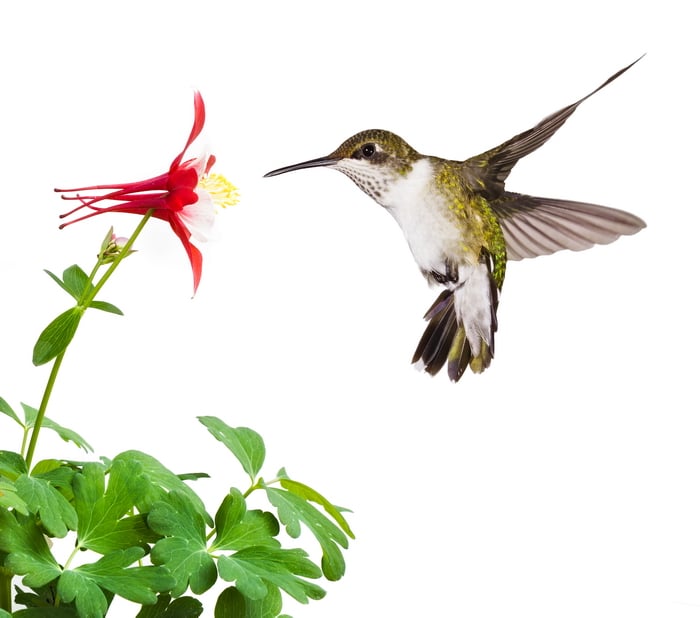
7 Red hummingbird flowers that bloom in the summer
Scarlet Bee Balm (Monarda didyma) Perennial plants grow vigorously, forming colonies if allowed to spread. Watch for powdery mildew in late summer. Bee balm has medicinal properties. Height to 3 feet, zones 3 to 9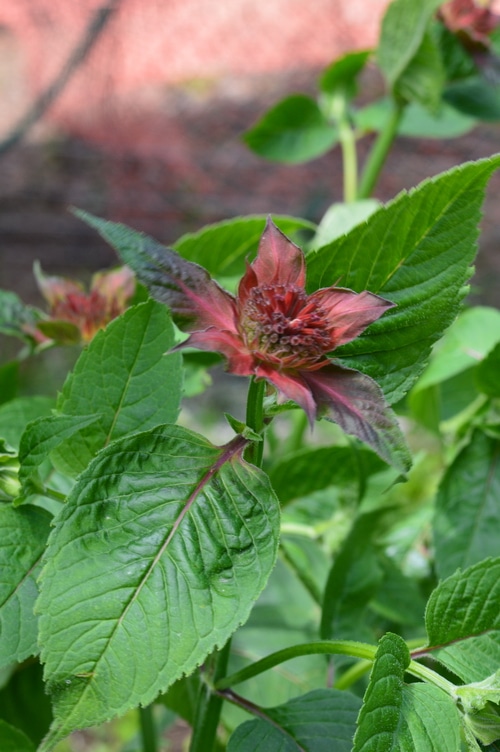
Beardtongue (Penstemon pinifolius Compactum) Excellent naturalizing plants when left to re-seed themselves. Its nectar-rich flowers are indispensable to pollinators like bumblebees and hummingbirds. Height 12 inches, zones 4 to 9
Red Hot Poker (Kniphofia) Drought tolerant perennial, likes full sun. Grasslike foliage needs protection with winter mulch in cold areas. Height 2 to 5 feet, zones 5 to 8
Cardinal Flower (Lobelia cardinalis) A relatively common wildflower. Overpicking this has resulted in its scarcity in some areas. The Cardinal Flower has long tubular flowers and depends on hummingbirds for pollination. Height 2 to 5 feet, zones 2 to 9
Yarrow (Achillea millefolium) This long blooming, easy to grow perennial is popular in formal borders and cottage gardens. Yarrow has medicinal properties. Height 2 to 5 feet, zones 3-9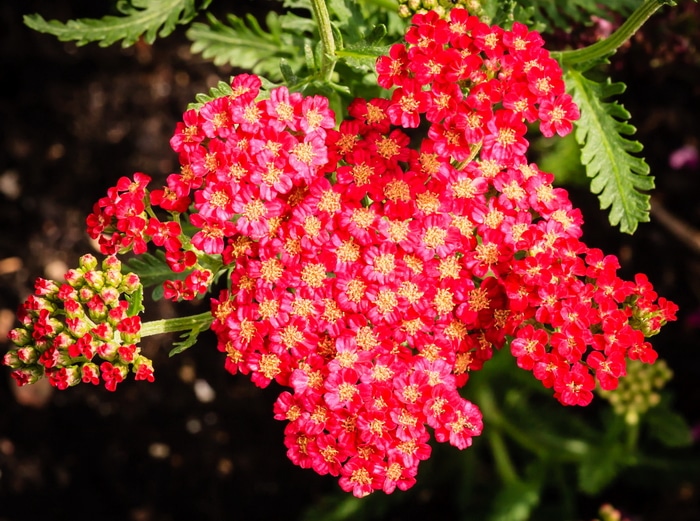
Sage (Salvia) this useful genus includes annual, perennial and biennial plants that provide long periods of bloom. Sage has medicinal properties. Height 18 inches to 6 feet, zones 4 to 10
Coral Bells (Heuchera sanguinea) Low growing perennial, blooms all summer when deadheaded. Heuchera prefers well-drained, rich soil in partial shade. Height 1 to 2 feet, zone 4 to 8
4 Red hummingbird flowers that bloom in the spring
Hollyhock (Alsea rosea) Short-lived perennial, blooms quickly from seed and can be grown as an annual. Hollyhock has medicinal properties. Height 6 to 10 feet, zones 4 to 8
Columbine (Aquilegia) These short-lived perennial plants require little care and are self-sowing. Height 2 to 3 feet, zones 3 to 8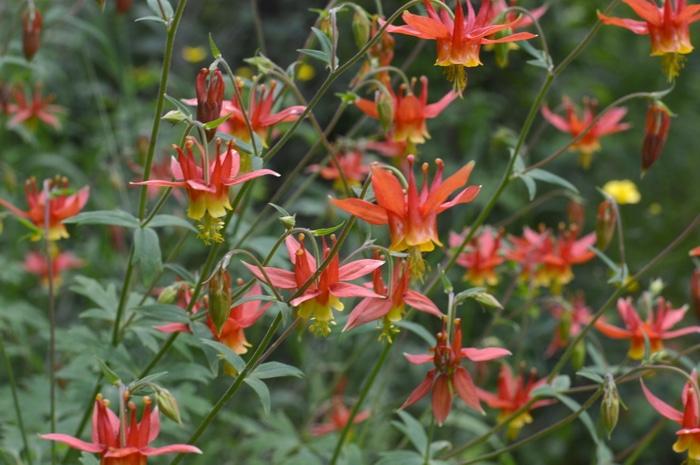
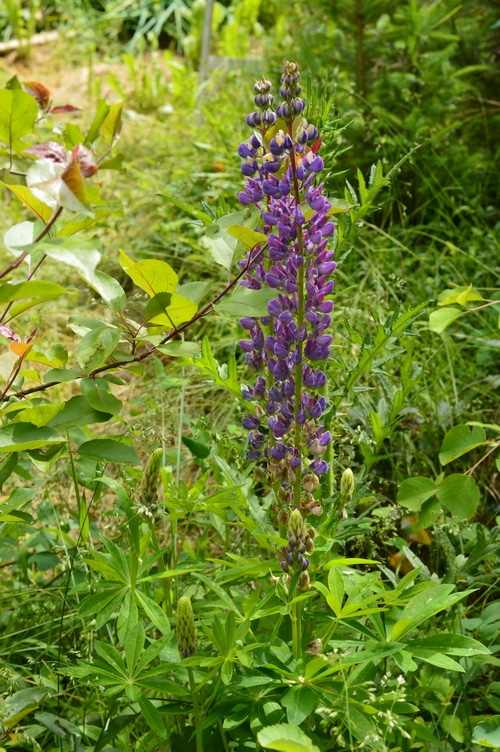
Trumpet Vine (Campsis radicans) A vigorous fast-growing perennial vine with red, tubular, 3-inch flowers throughout the summer. Make sure you have room for it because Trumpet Vine will climb quickly over structures and nearby trees, attaching by aerial rootlets. For the most flowers, plant in full sun and give regular moisture. In the early spring, it can be cut back to promote bushier growth. Height 30 to 40 feet (without pruning), zones 4 to 9
4 Red hummingbird flowers that bloom spring to fall
Fuchsia (fuchsia) Annual or perennial types. Plant trailers in hanging pots in a well-drained potting mix, and keep consistently watered. To help maintain the constant blooms of fuchsia, pinch off spent flowers. Height 1 to 8 feet, zone 7 to 10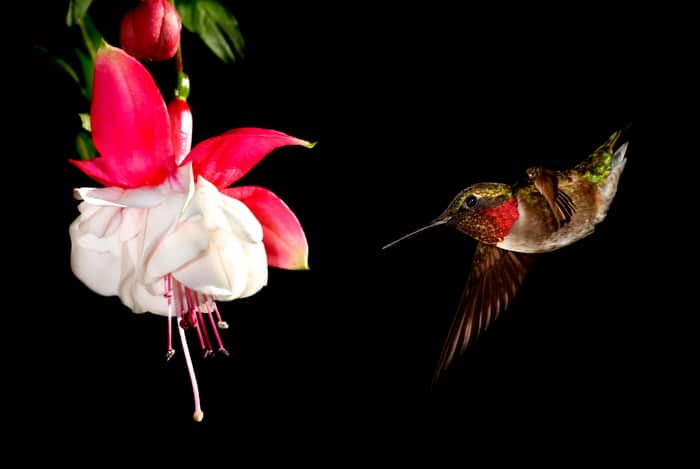
Anise Hyssop (Agastache rugosa) Prolific flower spikes with a pungent licorice scent. Anise hyssop has medicinal properties. Height 5 feet, zones 3 to 9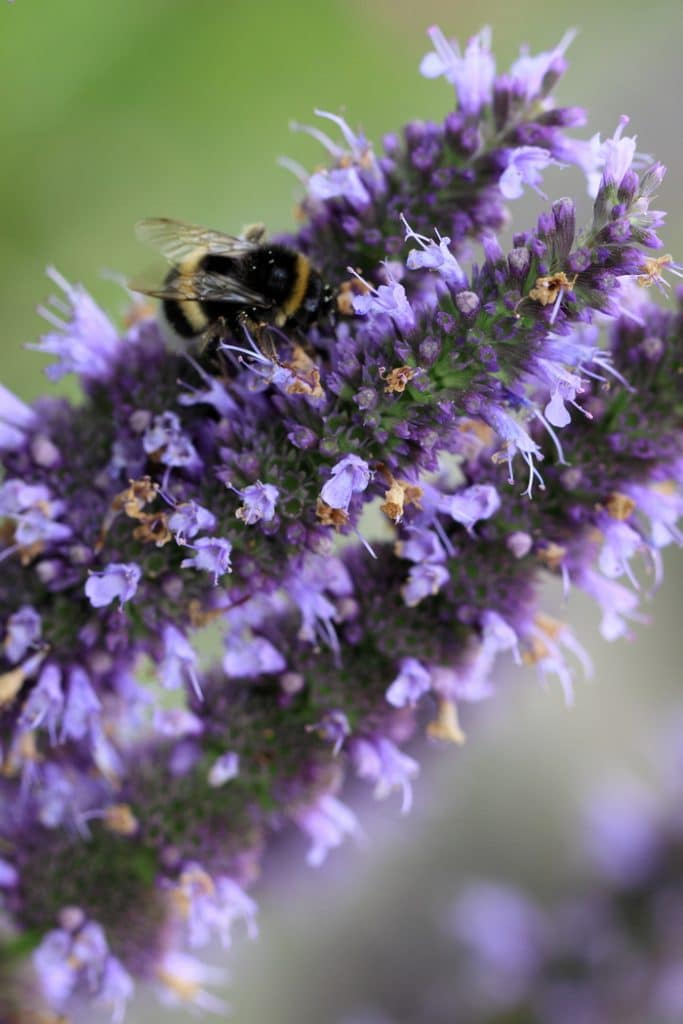
Think of the beauty you’ll have when you plant these 15 red hummingbird flowers for your garden! Not only will you attract a regular group of hummingbirds to your perennial garden but you will provide the natural nectar they need, as well as insects.
But does this mean you should take down your hummingbird feeder? Maybe not. The feeder doesn’t just feed hummingbirds, it also allows you to interact with them, observe them, and enjoy their comical antics. Feed them organic sugar in the hummingbird feeder but also provide an abundance of organically grown flowers for the best hummingbird oasis.
Learn more about using herbs for health and wellness from my Book
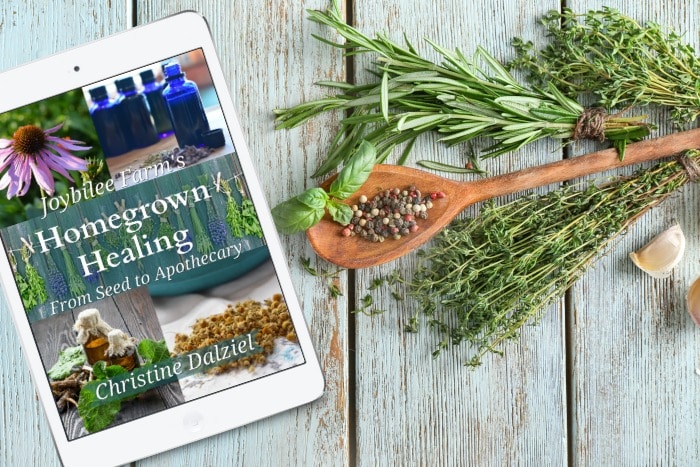
Homegrown Healing From Seed to Apothecary
My book Homegrown Healing From Seed to Apothecary will help you grow healing herbs in your own garden. Focusing on the easiest plants for beginners to grow, Homegrown Healing From Seed to Apothecary covers 30 plants, recommended by professional herbalists, that can be grown in the temperate zone. Initial garden preparation, garden design and harvesting tips lead the novice herbalist into early success. Choose which herbs to grow, learn how to use these herbs for your family’s health and wellness using the guidance in my book. You can find out more about this useful guide to growing more herbs and using them strategically here.



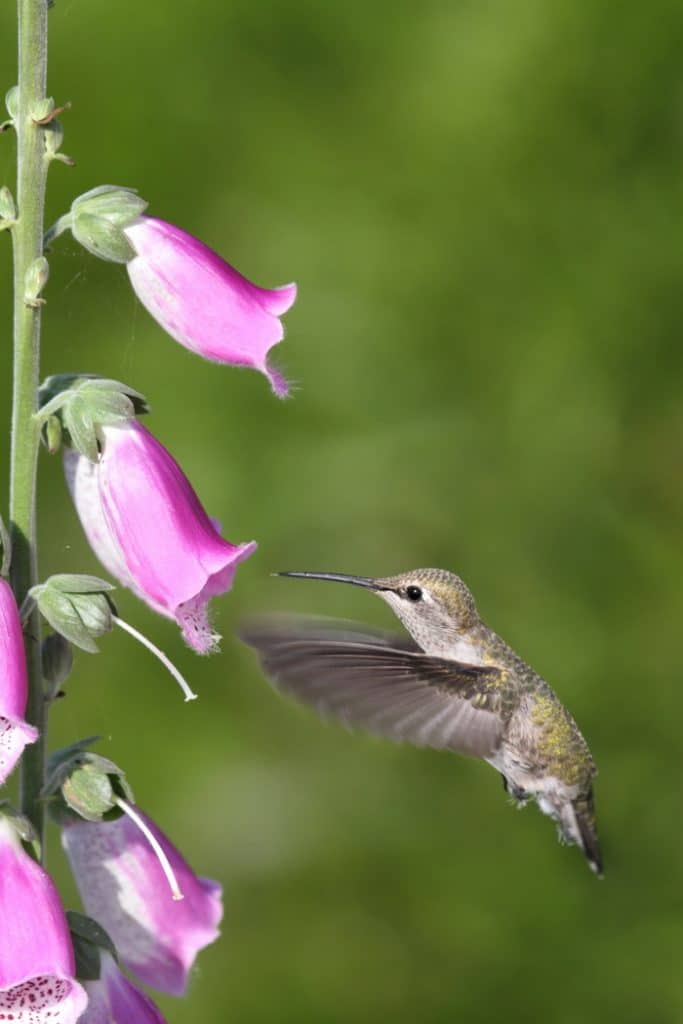


I have all 15! Only the lupine failed. Good article, But Dear u suggested Organic sugar for feeders & just simple plain store-bought sugar will do. No honey, jam, syrup or even powdered sugar. No Red dyes.